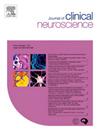比较2013-2017年和2018-2022年成年急性外伤性颈脊髓损伤患者的发病率和死亡率:回顾性10年全国趋势分析
IF 1.8
4区 医学
Q3 CLINICAL NEUROLOGY
引用次数: 0
摘要
虽然人们对脊柱外科手术质量的提高给予了相当大的关注,但很少有研究评估脊髓损伤(SCI)结果的进展。本研究旨在评估在过去十年中急性颈椎脊髓损伤患者的发病率和死亡率趋势是否有所改善。方法回顾性查询美国外科医师学会创伤质量计划数据库,比较2013-2017年和2018-2022年两组成人急性颈椎脊髓损伤患者的预后。评估患者人口统计、合并症、损伤类型、治疗方式和不良事件(ae)。采用多变量logistic回归确定ae、非常规出院(NRD)和住院死亡率的独立预测因子。结果与2013-2017年队列患者(n = 41,666)相比,2018-2022年队列患者(n = 54,755)的平均年龄显著增加(2013-2017年:54.0±18.8岁,2018-2022年:56.1±18.5岁,p <;0.001),并且有明显更高的基线共病负担。2018-2022年队列的平均损伤严重程度评分(ISS)略高于2013-2017年队列(2013-2017年:21.1±15.3,2018-2022年:21.3±14.2,p <;0.001)。瀑布(2013 - 2017年:19.9%,2018 - 2022:48.9%,p & lt;0.001)是2018-2022年队列中最常见的损伤机制,而“其他”损伤在2013-2017年队列中最常见(2013-2017年:60.0%,2018-2022年:4.5%,p <;0.001)。2018-2022年患者接受任何外科手术的频率更高(2013-2017年:47.7,2018-2022年:53.7,p <;0.001)。2018-2022年队列NRD发生率较低(2013-2017年:75.3%,2018-2022年:74.2%,p <;0.001)和计划外再操作(2013-2017年:0.9%,2018-2022年:0.5%,p <;0.001),以及较短的平均LOS(2013-2017年:12.2±15.7天,2018-2022年:12.6±16.2天,p <;0.001),与2013-2017年患者队列相比。相反,2018-2022年队列的住院死亡率明显更高(2013-2017年:11.3%,2018-2022年:12.6%,p <;0.001)和计划外ICU入院(2013-2017年:3.0%,2018-2022年:4.9%,p <;0.001),高于2013-2017年队列。在多变量分析中,2018年至2022年接受脊髓损伤治疗与NRD发生率降低显著相关(aOR: 0.73, 95% CI: 0.70-0.76),但住院死亡率升高(aOR: 1.18, 95% CI: 1.11-1.26)。结论与2013年至2017年接受治疗的患者相比,2018年至2022年接受治疗的患者NRD风险降低,但院内死亡风险增加。本文章由计算机程序翻译,如有差异,请以英文原文为准。
Comparing morbidity and mortality in adult patients with acute traumatic cervical spinal cord injury in 2013–2017 and 2018–2022: a retrospective 10-year national trend analysis
Objectives
While considerable attention has been dedicated to quality improvement in spine surgery, few studies have evaluated progress in spinal cord injury (SCI) outcomes. This study aimed to assess whether morbidity and mortality trends have improved for acute cervical SCI patients in the last decade.
Methods
The American College of Surgeons Trauma Quality Programs database was retrospectively queried and outcomes for adult patients with acute cervical SCI were compared between two 5-year groups: 2013–2017 and 2018–2022. Patient demographics, comorbidities, type of injury, treatment modality, and adverse events (AEs) were assessed. Multivariable logistic regression was used to identify independent predictors of AEs, non-routine discharge (NRD), and in-hospital mortality.
Results
Compared to patients in the 2013–2017 cohort (n = 41,666), patients in the 2018–2022 cohort (n = 54,755) were significantly older on average (2013–2017: 54.0 ± 18.8 years, 2018–2022: 56.1 ± 18.5 years, p < 0.001) and had a significantly higher baseline comorbidity burden. Mean Injury Severity Score (ISS) was slightly higher in the 2018–2022 cohort than in the 2013–2017 cohort (2013–2017: 21.1 ± 15.3, 2018–2022: 21.3 ± 14.2, p < 0.001). Falls (2013–2017: 19.9 %, 2018–2022: 48.9 %, p < 0.001) were the most common mechanism of injury in the 2018–2022 cohort while “Other” injury was most common in the 2013–2017 cohort (2013–2017: 60.0 %, 2018–2022: 4.5 %, p < 0.001). Patients in the 2018–2022 had a higher frequency of any surgical procedure (2013–2017: 47.7, 2018–2022: 53.7, p < 0.001). The 2018–2022 cohort had a lower frequency of NRD (2013–2017: 75.3 %, 2018–2022: 74.2 %, p < 0.001) and unplanned reoperation (2013–2017: 0.9 %, 2018–2022: 0.5 %, p < 0.001), as well as shorter mean LOS (2013–2017: 12.2 ± 15.7 days, 2018–2022: 12.6 ± 16.2 days, p < 0.001) compared to the 2013–2017 patient cohort. Conversely, the 2018–2022 cohort had a significantly greater rate of in-hospital mortality (2013–2017: 11.3 %, 2018–2022: 12.6 %, p < 0.001) and unplanned ICU admission (2013–2017: 3.0 %, 2018–2022: 4.9 %, p < 0.001)than the 2013–2017 cohort. On multivariable analysis, undergoing treatment for SCI from 2018 to 2022 was significantly associated with decreased odds of NRD (aOR: 0.73, 95 % CI: 0.70–0.76), but increased odds of in-hospital mortality (aOR: 1.18, 95 % CI: 1.11–1.26).
Conclusion
Our study suggests patients undergoing treatment from 2018 to 2022 were at decreased risk of NRD, but increased risk of in-hospital mortality compared to patients undergoing treatment from 2013 to 2017.
求助全文
通过发布文献求助,成功后即可免费获取论文全文。
去求助
来源期刊

Journal of Clinical Neuroscience
医学-临床神经学
CiteScore
4.50
自引率
0.00%
发文量
402
审稿时长
40 days
期刊介绍:
This International journal, Journal of Clinical Neuroscience, publishes articles on clinical neurosurgery and neurology and the related neurosciences such as neuro-pathology, neuro-radiology, neuro-ophthalmology and neuro-physiology.
The journal has a broad International perspective, and emphasises the advances occurring in Asia, the Pacific Rim region, Europe and North America. The Journal acts as a focus for publication of major clinical and laboratory research, as well as publishing solicited manuscripts on specific subjects from experts, case reports and other information of interest to clinicians working in the clinical neurosciences.
 求助内容:
求助内容: 应助结果提醒方式:
应助结果提醒方式:


